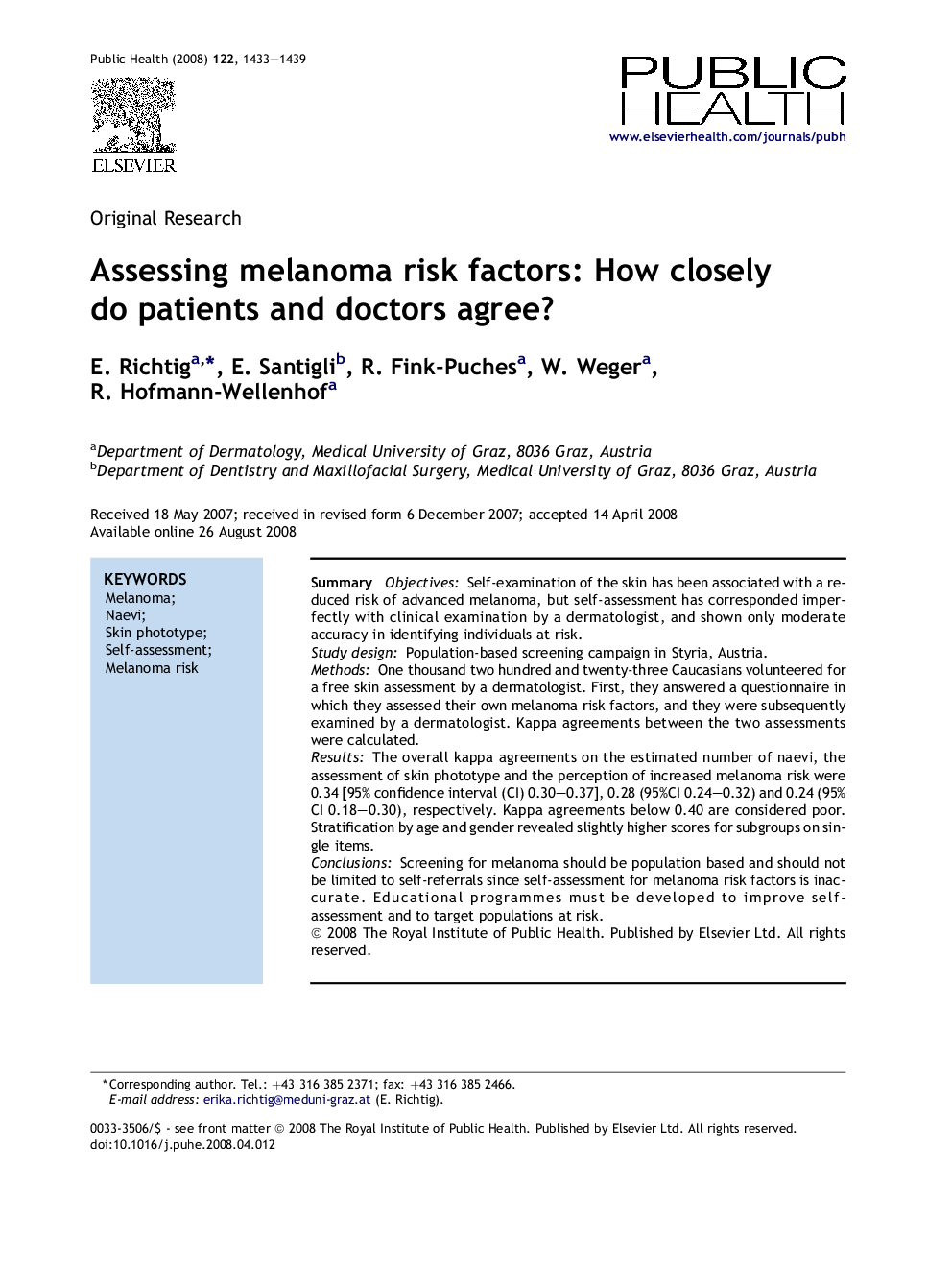| Article ID | Journal | Published Year | Pages | File Type |
|---|---|---|---|---|
| 1089018 | Public Health | 2008 | 7 Pages |
SummaryObjectivesSelf-examination of the skin has been associated with a reduced risk of advanced melanoma, but self-assessment has corresponded imperfectly with clinical examination by a dermatologist, and shown only moderate accuracy in identifying individuals at risk.Study designPopulation-based screening campaign in Styria, Austria.MethodsOne thousand two hundred and twenty-three Caucasians volunteered for a free skin assessment by a dermatologist. First, they answered a questionnaire in which they assessed their own melanoma risk factors, and they were subsequently examined by a dermatologist. Kappa agreements between the two assessments were calculated.ResultsThe overall kappa agreements on the estimated number of naevi, the assessment of skin phototype and the perception of increased melanoma risk were 0.34 [95% confidence interval (CI) 0.30–0.37], 0.28 (95%CI 0.24–0.32) and 0.24 (95% CI 0.18–0.30), respectively. Kappa agreements below 0.40 are considered poor. Stratification by age and gender revealed slightly higher scores for subgroups on single items.ConclusionsScreening for melanoma should be population based and should not be limited to self-referrals since self-assessment for melanoma risk factors is inaccurate. Educational programmes must be developed to improve self-assessment and to target populations at risk.
